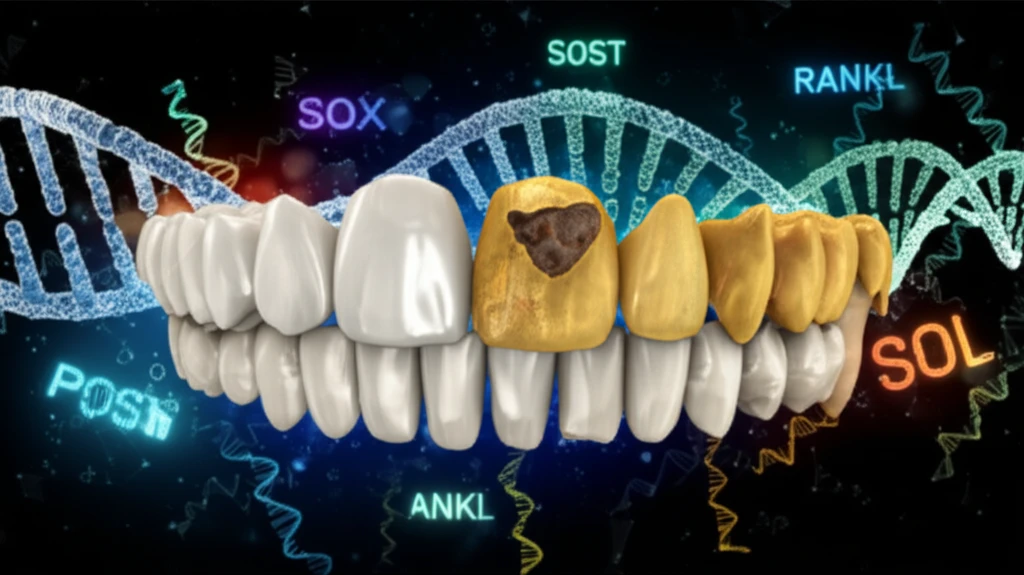
Decoding Gum Disease: Are Your Genes to Blame?
"New research reveals how specific genes influence the severity of chronic periodontitis, paving the way for personalized treatment strategies."
Periodontitis, commonly known as gum disease, affects millions worldwide. It's more than just bad breath; it's a chronic inflammatory condition that damages the soft tissues and bone supporting your teeth. While poor oral hygiene is a major culprit, recent studies suggest that genetics also play a significant role in determining who develops severe periodontitis.
A groundbreaking study published in the Journal of Investigative and Clinical Dentistry sheds light on the differential expression of key genes in individuals with severe chronic periodontitis. This research focuses on genes like periostin (POSTN), sclerostin (SOST), receptor activator of nuclear factor-κB (RANK), and its ligand (RANKL), which are crucial players in bone remodeling and inflammation.
This article breaks down the complex findings of the study, explaining how these genes influence the progression of gum disease. We'll explore how understanding your genetic predisposition can lead to more effective prevention and treatment strategies, bringing you closer to a healthier smile.
The Genetic Culprits: How Genes Impact Gum Disease

The study compared gingival tissue samples from healthy individuals and those with severe chronic periodontitis, analyzing the expression levels of the four key genes. The results revealed a distinct pattern: increased expression of SOST, RANK, and RANKL genes, coupled with decreased expression of the POSTN gene in severe periodontitis cases.
- Periostin (POSTN): This protein is normally involved in tissue repair and maintaining the structural integrity of the periodontal ligament. Lower levels of POSTN may compromise the tissue's ability to withstand mechanical stress and heal properly.
- Sclerostin (SOST): Sclerostin inhibits bone formation. Higher levels in gum disease could mean less bone is being made to replace what is being lost to the disease.
- RANK & RANKL: Think of these as key messaging proteins. RANKL activates RANK, which leads to bone breakdown. So, in chronic gum disease, these messaging pathways are in overdrive.
What This Means for You: Personalized Dental Care is on the Horizon
The study's findings highlight the potential for personalized dental care based on an individual's genetic profile. By identifying those at higher risk of developing severe periodontitis due to their gene expression, dentists can implement more aggressive preventive measures.
While genetic testing for gum disease isn't yet a routine practice, this research paves the way for future diagnostic tools. Imagine a simple test that reveals your genetic predisposition to periodontitis, allowing for tailored treatment plans that address your specific needs.
In the meantime, maintaining excellent oral hygiene, including regular brushing, flossing, and dental checkups, remains crucial for everyone. If you have a family history of gum disease, talk to your dentist about your concerns and explore potential screening options. Early detection and intervention are key to preventing the devastating effects of severe periodontitis and preserving your beautiful smile.
